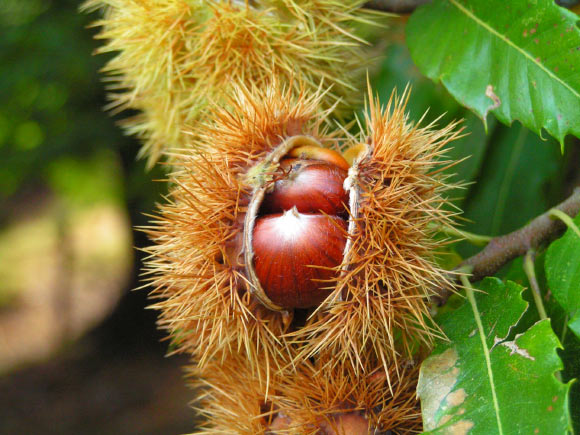Methicillin-resistant Staphylococcus aureus (MRSA) is one of the most serious infectious disease concerns worldwide. In 2019, the Centers for Disease Control and Prevention (CDC) labeled it as a ‘serious threat.’ Now, researchers from Emory University and the University of Colorado have isolated a new molecule from the leaves of the European chestnut tree (Castanea sativa) with the power to neutralize MRSA.
The European chestnut, also called the sweet chestnut, is a large deciduous tree belonging to the Fagaceae (beech) family.
It is native to elevated forests from Iran to the Balkans, and its fruit, the chestnut, has been eaten by humans for millennia.
The European chestnut is used by many communities around in the world in their traditional medicines.
In the Kosovar Albanian Alps, decoctions are prepared from the fruits, and they are taken internally to treat headaches and externally to treat hemorrhoids.
In the Marches region of Central-Eastern Italy, decoctions of the fruits are used as a hair wash to give light-colored hair a brown gloss, and a compress is made of the boiled fruit pulp to whiten facial skin.
In parts of Tukey, chestnut flower tea is used to treat hemorrhoids.
And going back to Pietro Andrea Mattioli’s 1554 commentary on Dioscorides’s De materia medica, chestnuts roasted with salt and pepper are attributed with aphrodisiac properties.
“We were able to isolate a molecule, new to science, that occurs only in very tiny quantities in the chestnut leaves,” said Dr. Cassandra Quave, a researcher in the Center for the Study of Human Health and the Antibiotic Resistance Center at Emory University and the Department of Dermatology at the Emory University School of Medicine.
“We also showed how it disarms MRSA by knocking out the bacteria’s ability to produce toxins.”
Previously, Dr. Quave and colleagues found that an extract from the leaves of the European chestnut disarms even the hyper-virulent MRSA strains.
Experiments also showed the extract did not disturb normal, healthy bacteria on skin cells.
The researchers also demonstrated how the extract works, by inhibiting the ability of MRSA bacteria to communicate with one another, a process known as quorum sensing.
In the new study, they isolated a novel active triterpenoid, named castaneroxy A, from the plant extract.
Tests on mouse skin infected with MRSA confirmed the molecule’s efficacy at shutting down the bacteria’s virulence, enabling the skin to heal more rapidly.
The scientists also characterized the crystal shape of castaneroxy A.
Understanding the 3D configuration of the crystal is important for future studies to refine and optimize the molecule as a potential therapeutic.
“We’re laying the groundwork for new strategies to fight bacterial infections at the clinical level,” Dr. Quave said.
“Instead of being overly concerned about treating the pathogen, we’re focusing on ways to better treat the patient.”
“Our goal is not to kill the microbes but to find ways to weaken them so that the immune system or antibiotics are better able to clear out an infection.”
A paper on the findings was published in the journal Frontiers in Pharmacology.
_____
Akram M. Salam et al. Castaneroxy A from the Leaves of Castanea sativa Inhibits Virulence in Staphylococcus aureus. Front. Pharmacol, published online June 28, 2021; doi: 10.3389/fphar.2021.640179








